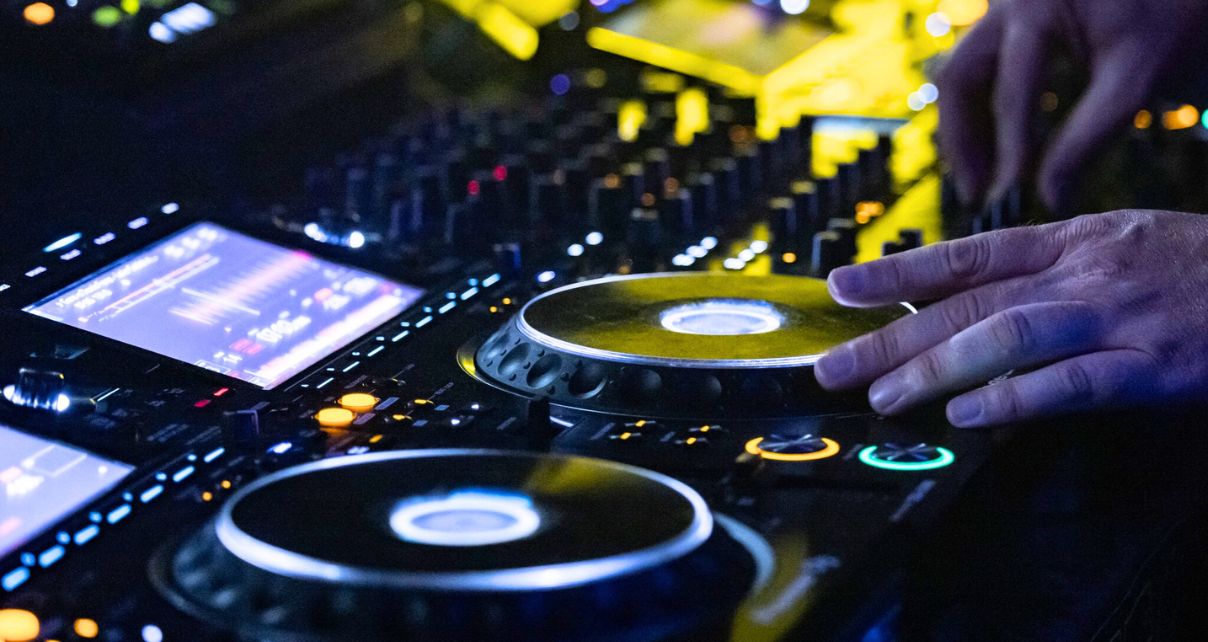In this replay of our live Q&A lesson, we discussed tips for your first time playing on club gear, the best way to analyse your tracks for musical key, what we think about various DJ apps (DJ.Studio, Serato Studio, My DJ Cloud), and more!
About this lesson
This is a recording of one of our free Thursday Q&A Live DJ lessons – “the show where DJs get answers to things they didn’t know they didn’t know”.
In this lesson, we took questions from our community about all things DJing and production – timings below. To learn more about how our DJ courses can help you become a better DJ or DJ/producer, check out our courses page.
Here’s what’s covered…
- 0:00 Intro
- 2:06 The 5 steps of DJing success
- 8:00 How can I add midi gear to a DJ set-up?
- 16:24 What are your thoughts on DJ.Studio?
- 23:12 Can you replace the power ports on DJ gear?
- 25:04 Should I play tracks by artists who’ve had legal trouble?
- 30:11 Can you “shuffle” playlists in DJ software?
- 31:03 Have you experienced grounding issues on the DDJ-FLX6 platters?
- 38:37 Do you recommend Serato Studio for producing?
- 40:15 What’s the best way to analyse tracks for musical key?
- 45:46 Can I use a different DJ set-up at gigs than I do at home?
- 49:55 Any tips for DJing in a club on CDJ-3000s for the first time?
- 56:28 Any advice for DJ software audio drivers not connecting?
Using club gear for the first time
If you’ve never DJed on the gear provided in a club before, you’re rightfully going to be quite nervous. But the truth is, once you’ve crossed a couple of hurdles, it really isn’t difficult to DJ on club gear. The first hurdle is getting your music into it. Usually, a club will have a set-up that requires you to have your music on a USB drive.

And the best way to prepare it is to use Pioneer DJ’s Rekordbox software. You can prepare your music on this for free on a laptop and export to a USB drive with playlists, cue points, loops, and so on, all ready to go on Pioneer DJ equipment. While it is possible to plug your laptop directly into this gear and play from DJ software the way you may do at home, this would need confirmation from the club that their set-up is prepared for this – And it’s not the normal way things are done.
To keep it simple, it’s always a good idea to figure out DJing straight from USB in a club. So your first job is to prepare your music and export your playlist for the event to a USB drive using Rekordbox. Your next job is to conquer the fact that navigating a playlist is different and not as good on standalone club gear as it is on a laptop.
DJ like a pro using ANY gear: The Complete DJ Course
The laptop advantage
One of the big advantages of DJing on a laptop is the huge screen and the ease with which you can navigate your library with very easy search and so on. These are probably things you take for granted, and you’re in for a shock when you reach the club system and realise that it’s clunkier, the screens are smaller, and it’s going to take you longer to find what you want. The best way around this is simply preparation.
Having a set prepared of maybe double the number of tracks you think you’re going to play is the way forward. Any DJ who is used to using USBs and club gear will tell you that this is the key to smooth DJ sets. You can’t just turn up with your whole collection and expect to play from it in a way you maybe are used to doing at home with a laptop and software.
And the final thing is actually using the things. Luckily nowadays, a properly set-up club system has got all the features, or at least most of the features that you’re used to. The big ones such as beatgrids, sync button, looping, cues, keylock, and more are all present and correct. Most DJ controllers nowadays are in fact laid out to copy the standard club layout of CDJs and a mixer.
Read this next: 9 Features To Look Out For On A Typical Club Mixer
And so you’ll probably find the effects the way you’d expect them to be, the mixer holds no surprises, and after a few minutes you’ll feel at home. But the best advice I can give you for the first time you play on this gear, especially if you don’t get a chance to practise, is just to plan to keep it very, very simple. Frankly, cutting out the gaps and keeping the volume level throughout a DJ set is not difficult on any gear.

If you approach things in this way, it should calm your nerves, and give you a chance to get used to where the controls are before starting to get more adventurous, probably even in the same DJ set. Ultimately, as we always teach, DJing requires just four things:
- A minimum of two music sources where you can change the speed of what’s playing
- A way of mixing between these two sources
- A way of listening on your headphones to the source that the audience isn’t hearing
- A way of controlling what the audience does hear
All of this is provided in a way that you can pick up very quickly, even if you’ve never used a club system in your life, on this gear. So don’t worry and enjoy your first DJ set on this kind of system.



